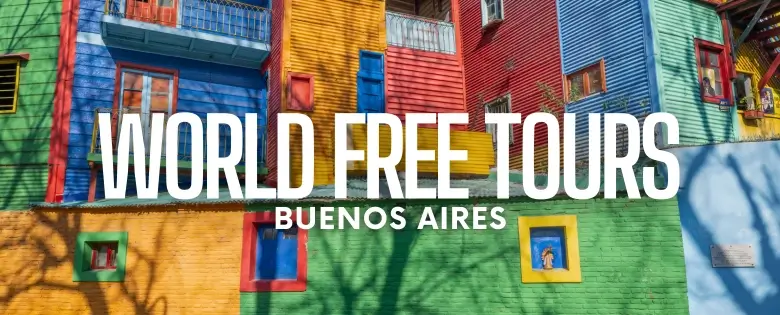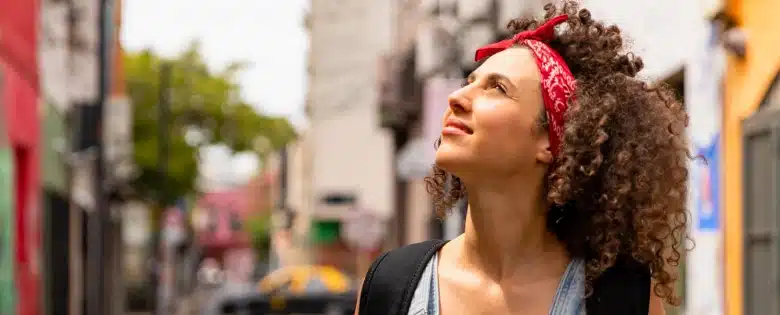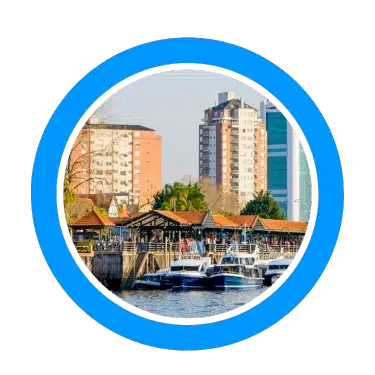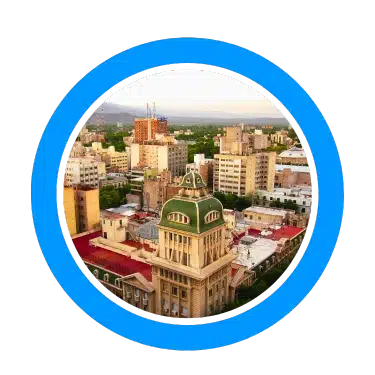
Step into the heart of Argentina’s capital with this free walking tour of Buenos Aires, the perfect way to uncover its fascinating history, vibrant culture, and iconic landmarks.
We’ll begin in the city center, where your guide will introduce the origins of Buenos Aires and how it grew into one of South America’s most influential capitals. From there, our first major stop will be Plaza de Mayo, the political and historical epicenter of Argentina. Here you’ll find the Casa Rosada, the pink presidential palace, famous for the balcony where Eva Perón once addressed the nation.
As we stroll down Avenida de Mayo, you’ll be transported back in time. This elegant boulevard, inspired by European capitals, is lined with grand buildings whose architecture tells stories of the city’s rich past. We’ll admire gems like the Metropolitan Cathedral, the La Prensa building, and the legendary Café Tortoni, the oldest coffeehouse in the city and a meeting point for writers, artists, and tango legends.
Our route continues to the National Congress of Argentina, a majestic landmark that symbolizes democracy and key moments in the nation’s history. From there, we’ll pass by Barolo Palace, an extraordinary building inspired by Dante’s Divine Comedy, before reaching the impressive Mural of Evita Perón, where you’ll hear the remarkable story of Argentina’s most iconic first lady.
Along the way, your guide will share anecdotes and curiosities that bring Buenos Aires to life, from its colonial roots to its role in shaping modern Argentina. After approximately two hours, our tour concludes, leaving you with a deeper understanding of Buenos Aires and plenty of inspiration to keep exploring. Whether it’s your first visit or a return trip, this walking tour is the perfect introduction to the city’s soul.

What You’ll See on the Free Tour of Buenos Aires
This walking tour explores the political, cultural, and architectural heart of Argentina’s capital. It is a great way to experience the top things to do in Buenos Aires while learning about the city’s history, famous figures, and everyday traditions.
Plaza de Mayo
The city’s main square has been the stage for revolutions, protests, and celebrations since the 16th century. Surrounded by historic buildings, it remains the symbolic heart of Buenos Aires.
Casa Rosada
The Pink House is Argentina’s presidential palace, instantly recognisable by its distinctive colour. From its balcony, leaders have addressed the people during key moments in history.
Avenida de Mayo
This grand avenue connects Plaza de Mayo with the National Congress. Its tree-lined sidewalks and elegant architecture give it a distinctly European feel.
Buenos Aires Metropolitan Cathedral
The city’s main cathedral combines a neoclassical façade with ornate baroque chapels inside. It is also the former seat of Pope Francis when he served as Archbishop of Buenos Aires.
La Prensa Building
Once home to a powerful newspaper, this ornate building showcases French-inspired design. Its rooftop still carries a bronze statue of Minerva, goddess of wisdom.
Café Tortoni
Founded in 1858, Café Tortoni is the oldest café in the city and a temple of tango culture. Writers, musicians, and politicians have all gathered under its stained-glass ceiling.
National Congress of Argentina
This monumental building anchors the end of Avenida de Mayo. Its green dome and impressive marble halls make it one of the city’s most important landmarks.
Barolo Palace
Inspired by Dante’s Divine Comedy, this eclectic skyscraper was once the tallest in South America. Guided tours take visitors through its symbolic design and up to a lighthouse offering city views.
Evita Perón Mural
One of Buenos Aires’ most famous murals depicts Eva Perón addressing the people. It is both a tribute to her legacy and a reminder of Argentina’s political passion.
The free walking tour Buenos Aires ties together these highlights, offering a memorable journey through the plazas, palaces, and boulevards that define the top things to do in Buenos Aires.

Tips to Enjoy the Free Tour of Buenos Aires
Buenos Aires is a city of history, tango, and vibrant street life. Exploring it on foot is the best way to take in its monuments, culture, and unique atmosphere. To get the most from your free walking tour, keep these tips in mind:
👟 Wear comfortable shoes. The tour lasts about 2 hours and covers wide boulevards, plazas, and cobblestone areas, so sturdy footwear is recommended.
💧 Bring water. Summers in Buenos Aires can be hot and humid. Staying hydrated will help you enjoy the walk.
📸 Have your camera ready. From Plaza de Mayo and Casa Rosada to Barolo Palace and the Evita mural, you’ll find plenty of iconic photo spots.
🌦️ Check the weather. The tour runs rain or shine. Bring a hat and sunscreen in summer, or a light jacket and umbrella during cooler or rainy days.
👥 Respect group size. Groups larger than 6 are not admitted on the free tour. Bigger parties should book a private tour of Buenos Aires.
💶 Carry some pesos for tips. The tour is free, but it’s customary to tip your guide if you enjoyed the experience.
⏰ Arrive a little early. Meeting in central Buenos Aires is straightforward, but giving yourself 10–15 minutes ensures a smooth start.
With these tips, you’re ready to dive into the history, legends, and landmarks of Argentina’s capital. This free walking tour is the perfect introduction to Buenos Aires, blending political history, European-style avenues, and the soul of tango.
Popular Activities in Buenos Aires
Free Tours in Argentina
FAQs 🔎
What will I see during the Free Tour of Buenos Aires?
During the Free Tour of Buenos Aires, you’ll explore a diverse range of captivating landmarks and historical sites that showcase the city’s rich heritage. Your journey will include the colorful Mural of Evita Perón, the striking Barolo Palace, and the emblematic La Prensa Building. Immerse yourself in Argentina’s political history at Plaza de Mayo, home to the iconic Casa Rosada.
Discover the architectural splendor of the National Congress Building and marvel at the towering Obelisk in Plaza de la República. Don’t forget to visit the legendary Tortoni Café, a beloved gathering place for artists and intellectuals. Keep in mind that the specific stops and sights can vary depending on the tour provider and guide.
How much should I tip my guide?
For free tours, the general principle of tipping is based on your satisfaction with the tour and your budget. A common practice could be in the range of 500 to 1000 ARS per person, depending on the quality of the tour, the guide’s performance, and your budget. Of course, if you feel that the guide went above and beyond, you could tip more as a token of appreciation.
Keep in mind that these amounts are just suggestions, and you should adjust your tip according to your level of satisfaction with the tour. It’s always a good idea to carry some small bills to make tipping easier.
How do I find the guide?
Head to Calle Hipólito Yrigoyen 1760 and arrive a few minutes before the scheduled start time. Keep an eye out for a group gathering, as there could be fellow tour participants. By arriving early and being attentive to signs and group dynamics, you’ll easily find your guide and be ready to embark on an unforgettable journey through Buenos Aires.
What is the meeting point of the Free Tour of Buenos Aires?
The meeting point is outside Calle Hipólito Yrigoyen 1760.
How long does the Free Tour of Buenos Aires last?
The Free Tour of Buenos Aires lasts around 2 and a half hours.
Where does the tour end?
The Free Tour of Buenos Aires finishes at Casa Rosada.
When is the best season to join the tour?
The tour runs all year. Spring (September to November) and autumn (March to May) are the most pleasant times to visit, with mild temperatures and colorful cityscapes. Summer (December to February) can be hot and humid but lively, with outdoor events and festivals. Winter (June to August) is cooler but generally mild compared to other cities, and still a great time to explore.
What happens if it rains?
The tour runs rain or shine. Please bring an umbrella or raincoat if rain is forecast.
Is the free tour of Buenos Aires wheelchair accessible?
Most of the route is accessible, though some older streets and sidewalks may be uneven. Wheelchair users should check conditions in advance.




